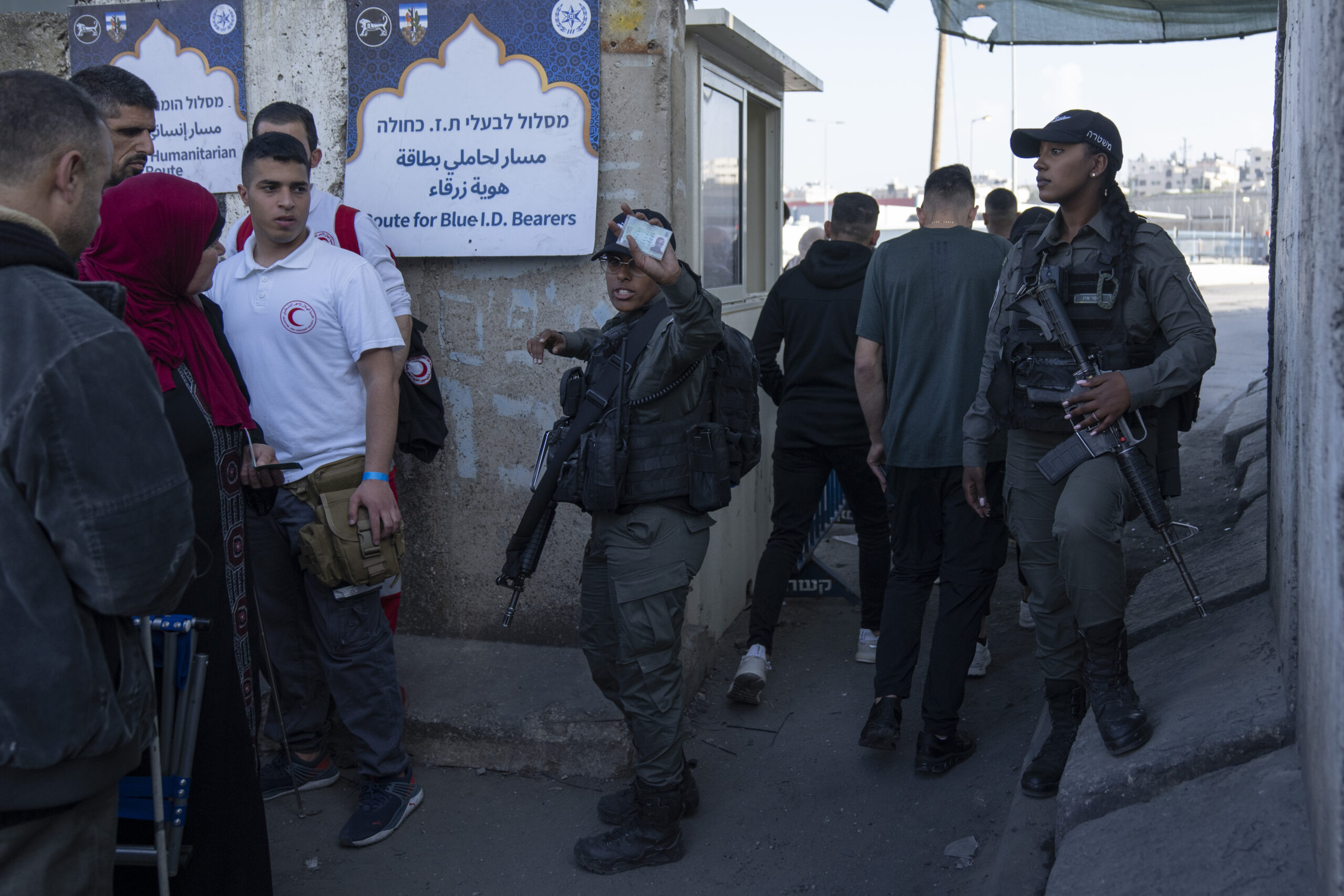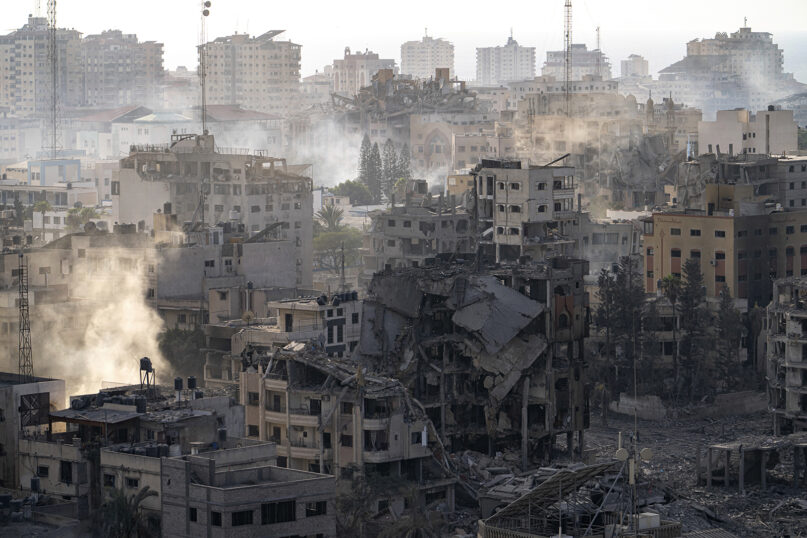(Sightings) — After the attack in Israel last month, I saw three main responses from my friends who pay close attention to this region. The first response was horror at the violence of Hamas and an insistence that the hostilities cease and the more than 240 hostages be released.
The second response was a worry about how the Israeli military would respond; the fact that more than 10,000 deaths have been reported in Gaza over the last month was as predictable as it is tragic. The history of the region shows that the casualties of violent conflicts are frequently civilians and disproportionately Palestinians.
The third response was a concern that the American media wouldn’t provide sufficient context, and that popular understanding in the United States would only reflect part of the story. Even if news outlets only report facts, they have to decide which facts are included and which facts are left out. As Israeli journalist Gideon Levy wrote, “It is not about the truth-telling, it is about the whole truth-telling.” For many commentators, one part of the “whole truth” that is often omitted is structural violence.
But what is structural violence? Is it actually violence? What is the history of this concept, and why is it being invoked now?
The term “structural violence” was coined by peace theorist Johan Galtung in 1969. In this earliest formulation, structural violence was the name given to preventable social conditions that result in groups of people having unequal chances at living and thriving. Whereas in “personal or direct” violence, Galtung writes, we can easily identify the actor responsible, in structural violence “there may not be any person who directly harms another person in the structure. The violence is built into the structure and shows up as unequal power and consequently as unequal life chances.”
For example, consider a society where a racial minority has dramatically less access to healthy food, and their life expectancies are thus lower. Responding to criticisms that peace researchers focused too narrowly on the absence of war, Galtung introduced the term “structural violence” so people who seek peace have to take social systems like these into account.
As the term “structural violence” became more prevalent in the 1970s and 1980s, the focus changed slightly, in part due to critiques by Kenneth Boulding, in part due to developments in Galtung’s thinking and in part due to peace scholars’ engagements with critical theory.
The distinction between structural violence and direct violence (also called acute violence) remained, but greater emphasis was placed on how social institutions operated to deprive people of their material and psychological needs.
Writing in 1986, David Gil defined structural violence as the “extent to which fundamental human needs tend to be frustrated and human development tends to be inhibited as a result of the normal workings of social institutions.” One can sometimes identify specific actors (legislators, business owners) who bear a greater responsibility for structural violence than others.
But, as religion scholar Jason Springs points out, the power of structural violence lies in the fact that dehumanizing, repressive and exploitative conditions can seem like business as usual — to perpetrators, victims and outsiders.
However one defines structural violence, the central idea is that focusing only on direct violence obscures other, potentially more harmful, social injustices. What’s more, human beings have a tendency to pay attention to direct violence and ignore structural violence. Punching someone registers on our moral Richter scale; slowly eroding their will to live does not. For those not directly affected, direct violence shouts while structural violence whispers.
The Quaker Palestinian writer Jean Zaru observes, “The structures of violence are silent and people cannot take pictures of those.” By contrast, she writes, “television captures only the direct violence.”
Even that, Zaru notes, is selective; the direct violence of the Israeli military tends to be depicted in the West as preserving “law and order,” if it is depicted at all. Like police violence in the United States, this direct violence is rarely deemed exceptional enough to merit publicity. Though a pacifist herself, Zaru criticizes Western pacifists who criticize direct violence in Israel and Palestine while remaining silent about structural violence.

Israeli border police officers check identification cards of Palestinians while they try to cross from the occupied West Bank into Jerusalem to pray during the holiest night of Ramadan, Laylat al-Qadr, or the “Night of Destiny,” when Muslims believe that the Quran was revealed to the Prophet Muhammad, in the Al-Aqsa Mosque compound, at the Israeli military Qalandiya checkpoint, near Ramallah, April 17, 2023. Hundreds of thousands of Palestinians are barred from legally crossing into the contested capital, with most men under 55 years old turned away at checkpoints, and compelled to resort to other, perilous means to get to Al-Aqsa. (AP Photo/Nasser Nasser)
A bombing makes headlines in the way that restricting access to water does not. One is seen as noteworthy, the other is seen as normal. One arouses our moral outrage, the other might not stop us from scrolling.
Even journalists who want to provide more context for the situation in Gaza tend to focus more on paroxysms of direct violence — 1948, 1967, 1987, 2014 — than the day-to-day experiences of people in the occupied territories. But as Ian Black reminds us in his history of the conflict, “Underlying structures, attitudes, and routines matter as much as the endless ‘newsworthy’ events that erupt from them.”
This is why commentators insist that structural violence must not be ignored as we try to make sense of the present situation. Muhannad Ayyash argued in April:
Israeli violence is first and foremost structural. It involves the dehumanization of the Palestinian people in Israeli culture, education, and politics; the checkpoints; the apartheid wall; the besiegement of the Gaza Strip; the home demolitions; the permits system; the economic hardships Palestinians suffer; the restrictions on Palestinian access to healthcare and social services; the imprisonment; the denial of the freedom of movement; the limited access to holy places; the stealing of Palestinian lands; the building and expansion of illegal settlements, and so on.
These realities do not justify or excuse Hamas’ violence, but they are necessary to explain it.
Our tendency to react to direct violence while ignoring structural violence has wreaked havoc on the world countless times. As human beings, we are so easily lulled to sleep by the white noise of repression and hypnotized by the routinization of recrimination. The journalistic dictum “If it bleeds, it leads” is a scathing indictment on our moral shortsightedness.
Of course, the fact that it took the horrors of the Holocaust for many Europeans to recognize structural violence against Jews is another important and tragic part of the “whole truth.”
In a recent interview, Palestinian scholar and nonviolence advocate Daniel Bannoura expressed gratitude that American Christians are taking an interest in Palestine, but also frustration that it took the Hamas attack and Israeli retaliation to spark this interest. The fact that many people around the world don’t pay attention to structural violence gives power to the occupation; the fact that they do pay attention to direct violence gives power to Hamas. The international tendency to shine a spotlight on exceptional acts of direct violence encourages militant groups to use tactics of terror to get their points across.
I write this by way of confession. After all, this column is part of the very problem I am criticizing. I’m writing in response to acute violence rather than in response to steady, bureaucratic devastation. I’m reacting to what’s already in the headlines rather than actively seeking to listen to people suffering under what Martin Luther King Jr. calls a “negative peace.”
At best, I hope that these words can help all of us, myself included, reflect on what gets overlooked when we allow our moral agendas to be dictated by the news cycle.
Zaru writes, “Without justice, there is no peace, even in the absence of open strife.” As a nonviolent activist, she has dedicated her life to humanizing Palestinians and Israelis and to challenging violence of all kinds. While I hope the direct violence ends soon, I also hope we will have the presence of mind to recognize violence and demand justice “even in the absence of open strife.”
(Russell Johnson is assistant director of the undergraduate religious studies program at the University of Chicago Divinity School. This commentary originally appeared in Sightings, a publication of the Martin Marty Center for the Public Understanding of Religion at the University of Chicago Divinity School. The views expressed do not necessarily represent those of Religion News Service.)





